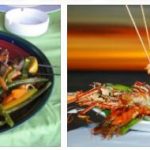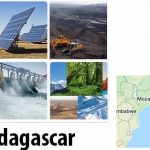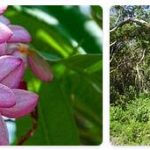Geography in Madagascar
The state of Madagascar occupies most of the island of the same name in the Indian Ocean. The fourth largest island in the world is located approx. 300 – 400 km east of the African continent off Mozambique.
Central Madagascar is a plateau with an average altitude of 1100 meters. It drops steeply and steeply to the east, while the rise in the west is gentler. The plateau culminates in the Maromokotro, the highest mountain on the island at 2,876 meters, and drains mainly in a westerly direction via several large rivers.
- Visit listofusnewspapers for mass media including newspaper and culture in Madagascar. Also check smber for agriculture and fishing facts of Madagascar.
Flora and fauna in Madagascar
Madagascar has been separated from the mainland for a long geological period and is therefore geo-ecologically one of the “older islands” in the history of the earth. Therefore, there are many unique animals and plants in Madagascar that cannot be found anywhere else on earth. The great variety of animal and plant species and the existence of diverse ecosystems make Madagascar one of the most extensive biodiversity environments on earth.
Before the first settlers arrived, Madagascar was probably predominantly forested. With sufficient rainfall, tropical lowland rainforests have developed in the coastal zones, of which only four percent have been preserved. The largest contiguous and still existing rainforest areas are on the Masoala Peninsula. From east to west the rainforest gradually changes over the wet savannahs into the dry and in the south also thorn savannahs, which today cover almost 90 percent of the island. Attempts at reforestation have so far been unsuccessful, and natural recultivation of the fallow land through the forest is hardly taking place. Despite legal bans, about 50 percent of the savannahs are burned by herdsmen annually, creating an extremely impoverished secondary savannah with resistant, but nutrient-poor grasses like Aristida emerges. More than 12,000 different plant species can be found in Madagascar.
Predators are only represented in Madagascar by smaller, feline mammals, the Eupleridaen, and crocodiles. Lemurs and tenreks, on the other hand, are unique to Madagascar. Of the reptiles, a lot of chameleon species are to be emphasized, which are native to Madagascar. The formerly pronounced megafauna on Madagascar, which included the huge elephant birds, various types of giant lemurs and the Malagasy hippopotamus, has now died out.

National parks and nature conservation in Madagascar
The protection of the environment is anchored in the Malagasy constitution as a national goal. A government plan plans to triple the existing area of the currently 47 official nature reserves. The enforcement of the protection status turns out to be difficult, however, as the people living in the areas concerned pursue different interests and reject nature conservation. According to reports, precious woods are still illegally felled on a large scale in Madagascar and offered on the international market.
Approximately half of the 47 designated nature reserves in Madagascar have the character of a national park, some with special protection status. A selection of areas of particular interest include the following national parks:
Montagne d’Ambre National Park
The Montagne d’Ambre National Park was designated as early as 1958 in the north of Madagascar on an area of approx. 182 km². It is located at an altitude of 1000 to 1445 meters above sea level. NN. The landscape is characterized by a volcanic rock massif with several waterfalls and crater lakes. The fauna and flora is represented by many different species of birds, lemurs and orchids.
Tsingy de Bemaraha National Park
The national park, which emerged in 1997 from the strict nature reserve Tsingy de Bemaraha on an area of approx. 723 km², is located in the province of Mahajanga in the western lowlands of Madagascar and is part of the UNESCO World Natural Heritage. The karst landscape with conspicuous limestone needles (Tsingys) standing closely together forms bizarre rock formations in the form of a stone forest. The plateau areas are partially forested. An annual rainfall of around 1000 mm means that the gorges at the foot of the Tsingys are extremely humid, while savanna-like conditions prevail on the karst areas. In the deeper areas there are lakes and mangroves. 86% of the 650 plant species found in the national park, over 80% are endemic. The Madagascan dry forest is an ecological specialty.
Isalo National Park
The Isalo National Park, designated in 1962 in the southwestern plateau of Madagascar, spreads over an area of approx. 860 km² and is one of the most popular national parks in Madagascar. The altitude is on average 1000 m above sea level. NN. The national park is characterized by the rugged Isalo Mountains with deep gorges, bizarre rock formations and eroded caves. A variety of endemic plant species as well as lemurs (ring-tailed lemurs, larvae sifaka, red-fronted lemurs), fossas and Madagascar boas can be observed in the park.
Ankarafantsika National Park
The Ankarafantsika National Park near the village of the same name was established in 1927 as one of the oldest nature reserves in Madagascar on an area of 1350 km² in the northwestern lowlands of the island. The national park connects to the east bank of the Mahajamba River and is home to the beautiful Ravelobe Lake. Over 800 plant species are represented among the lush vegetation of the national park, most of which are endemic to the park. Eight different species of lemur including the Mongozmaki, the Coquerel sifaka and the Western fat-tailed lemur, 129 species of birds, including the Madagascar sea eagle, chameleons, iguanas, snakes and freshwater turtles can be observed on animals.
Ranomafana National Park
The Ranomafana National Park, located in the area of the eastern edge of the Malagasy high plateau near the city of Fianarantsona, is known for its waterfalls and thermal baths as well as for the variety of lemurs and bird species. It was designated as a national park in 1991 on an area of 416.00 km² and is part of the UNESCO World Heritage Site in Madagascar. Thanks to the evergreen rainforest, with which the park is abundantly overgrown, a great variety of orchids, tree ferns and mosses thrive here. The park is home to a total of twelve lemurs and 118 species of birds, 68 of which are critically endangered in Madagascar.










